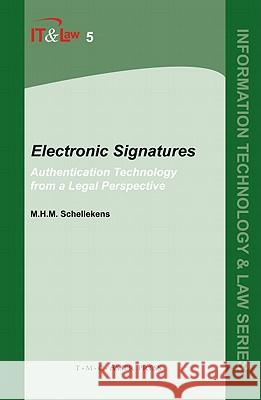Electronic Signatures: Authentication Technology from a Legal Perspective » książka
Electronic Signatures: Authentication Technology from a Legal Perspective
ISBN-13: 9789067041744 / Angielski / Twarda / 2004 / 150 str.
With these issues the subject of legal usability is not completely covered. Enforcement is perhaps the most obvious issue that is not dealt with. There fore I will indicate for what reason enforcement has been omitted as a sepa rate issue. This has the following background. A signature may alleviate eviden tiary burdens that may arise when enforcing a contract, but enforcing a contract involves much more than evidence of the existence and contents of a contract. E-commerce has opened the possibility to engage in cross border business with a low value per transaction. Even if one has the authenticated identity of one's contracting party, it may still be too com plicated or expensive to commence legal proceedings against a party. A signature does not in itself result in compliance with contracts and legal rules. A digital signature may, however, be an important part of a more encompassing enforcement concept. The security dimension of signatures only makes sense if one is really willing to embark upon enforcement (in stead of accepting the loss). Enforcement in the Internet environment is not something that can be done on an ad hoc basis. The territorial division of the law hampers enforcement in the borderless Internet envi ronment: each country has its own system for determining and adminis tering law. Furthermore, traditional courts are not as yet tailored to the enforcement needs that originate from the Internet."











